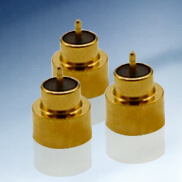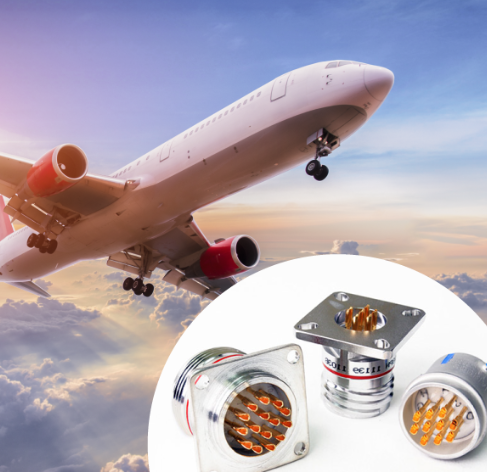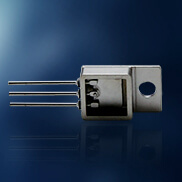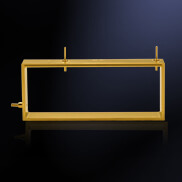Glass-to-Metal Seal: One of the Four Main Airtight Seals
Release time:2025-09-22
In various industries, ensuring the integrity of electronic and mechanical systems is crucial. Among the many sealing techniques, glass-to-metal sealing stands out as one of the most reliable and versatile solutions. This airtight seal plays a vital role in creating robust and durable connections for various applications, including aerospace, electronics, and medical devices.
What are the methods of hermetic sealing?
-How to do hermetic sealing?
-What's the difference between airtight and hermetic?
When is hermetic sealing useful?
Glass-to-Metal Seal Design Guide
-Two main types of glass-to-metal seals
-Examples of possible combinations of glass-to-metal seals materials
-Comparison of glass to metal hermetic seal and epoxy seals
Advantages of using glass to metal sealing
-Corrosion resistance of glass-to-metal seals
-strong sealing of glass-to-metal connectors
Why choose Spcera: We can provide you with customized sealing solutions
What Are the Methods of Hermetic Sealing?

Hermetic sealing is the process of creating an airtight and watertight seal between two materials, preventing the passage of gases or liquids. When it comes to glass-to-metal sealing, the process ensures that the internal environment is completely sealed off from external elements, which is essential for high-performance applications.
How to Do Hermetic Sealing?
The process of glass-to-metal sealing typically involves fusing a glass component with a metal one using high heat. This creates a strong bond between the two materials, forming an impermeable barrier. The key to the hermetic sealing process is selecting the right glass and metal materials, heating them to the appropriate temperature, and controlling the cooling process to ensure a perfect bond.
Glass-to-metal seals often use special glass formulations that expand and contract at the same rate as the metal, reducing the risk of thermal shock and material failure. This makes them highly reliable in harsh environments where temperature fluctuations are common.
What’s the Difference Between Airtight and Hermetic?
While the terms "airtight" and "hermetic" are often used interchangeably, they are slightly different. An airtight seal only prevents the passage of air, whereas a hermetic seal prevents all gases, liquids, and contaminants from entering or escaping. A hermetic seal is thus a more stringent and reliable solution, ensuring absolute protection in sensitive environments.
When Is Hermetic Sealing Useful?

Hermetic sealing is particularly useful in industries where maintaining a controlled internal environment is essential. Some common applications include:
1.Aerospace: In satellites and aircraft, glass-to-metal seals are crucial for protecting sensitive electronics from external pressures, temperature fluctuations, and other environmental hazards.
2.Electronics: For components such as sensors, power devices, and vacuum tubes, a hermetic seal ensures that no contaminants interfere with their functionality.
3.Medical Devices: In medical technology, glass-to-metal seals are used in implants, sensors, and other devices to maintain sterility and prevent fluid leakage.
4.Energy: In the energy sector, glass-to-metal seals are employed to ensure the safe operation of high-performance devices like high-voltage switches and batteries.
Glass-to-Metal Seal Design Guide

Designing a glass-to-metal seal requires a deep understanding of the materials and their interaction. The seal must withstand temperature changes, mechanical stress, and exposure to various environmental factors.
Two Main Types of Glass-to-Metal Seals
1.Compression Seals
Principle: Compression seals use the force of a metal component to compress the glass into place, forming a secure bond.
Materials: Stainless steel, aluminum, and certain alloys are commonly used for compression seals.
Function: These seals are designed to offer resistance to pressure while ensuring minimal deformation of the glass.
Applications: Widely used in the aerospace and electronic industries, where a reliable seal is necessary in a compact space.
2.Matched Seals
Principle: Matched seals create a bond between glass and metal that expands and contracts at the same rate, thus minimizing thermal shock.
Materials: Specific alloys and types of glass are selected to match the thermal expansion properties of each material.
Function: These seals offer exceptional performance under thermal stress, ensuring a long lifespan in harsh conditions.
Applications: Common in medical devices and high-precision electronics, where sealing strength and durability are critical.
|
Comparison Table for Glass-to-Metal Seal Types |
||||
|
Type of Seal |
Principle |
Materials Used |
Advantages |
Applications |
|
Compression Seal |
Metal compresses glass |
Stainless steel, |
Strong mechanical strength, |
Aerospace, Electronics |
|
Matched Seal |
Thermal expansion match |
Alloys, |
Thermal shock resistance, |
Medical Devices, |
Examples of Possible Combinations of Glass-to-Metal Seal Materials
When selecting materials for glass-to-metal seals, it’s important to ensure that the glass and metal are compatible in terms of thermal expansion rates, mechanical properties, and environmental resistance. Some common combinations include:
Kovar and Glass: Kovar, a nickel-iron alloy, is commonly used with borosilicate glass for its compatibility with a wide range of sealing temperatures and mechanical stresses.
Aluminum and Glass: Aluminum is often paired with special glass formulations for low-cost applications in electronics and medical devices.
Titanium and Glass: Titanium’s resistance to corrosion makes it an ideal pairing with glass for use in harsh environmental conditions.
Comparison of Glass-to-Metal Hermetic Seal and Epoxy Seals
Epoxy seals are a popular alternative to glass-to-metal seals due to their ease of application and lower cost. However, glass-to-metal seals offer superior performance in many areas, including:
Temperature Resistance: Glass-to-metal seals can withstand much higher temperatures than epoxy seals, making them suitable for more demanding environments.
Mechanical Strength: Glass-to-metal seals tend to be stronger and more durable, especially in applications subject to vibration and pressure.
Longevity: Glass-to-metal seals have a longer lifespan than epoxy seals, particularly in harsh chemical or thermal environments.
|
Feature |
Glass-to-Metal Seal |
Epoxy Seal |
|
Temperature Resistance |
High |
Low to Medium |
|
Mechanical Strength |
Strong |
Moderate |
|
Durability |
Long-lasting |
Shorter lifespan |
|
Cost |
Higher |
Lower |
Advantages of Using Glass-to-Metal Sealing

Corrosion Resistance of Glass-to-Metal Seals
One of the key advantages of glass-to-metal seals is their ability to withstand corrosion. The glass acts as a barrier that prevents corrosive gases or liquids from coming into contact with the metal, making these seals ideal for use in industries like aerospace, medical, and energy, where exposure to harsh chemicals or moisture is common.
Strong Sealing of Glass-to-Metal Connectors
Glass-to-metal seals provide a robust and permanent seal that can withstand high mechanical stress and temperature fluctuations. This makes them highly reliable in demanding environments, ensuring that critical components like sensors and electronic devices remain sealed for their entire operational life.
Why Choose Spcera: Customized Sealing Solutions

At Spcera, we specialize in providing customized glass-to-metal sealing solutions for a wide range of industries. With our expertise in material science and engineering, we can help design and produce seals that meet the specific requirements of your project. Whether you need to ensure airtight protection for aerospace components, or create a durable seal for medical devices, we have the tools and knowledge to deliver the best solution.
Our team is dedicated to working closely with clients to understand their unique needs, ensuring that every glass-to-metal seal we produce meets the highest standards of quality, reliability, and performance.
Glass-to-metal sealing is a critical technology for creating airtight and durable connections in high-performance systems. Whether you’re in aerospace, electronics, or healthcare, understanding the design principles, material combinations, and benefits of glass-to-metal seals.






